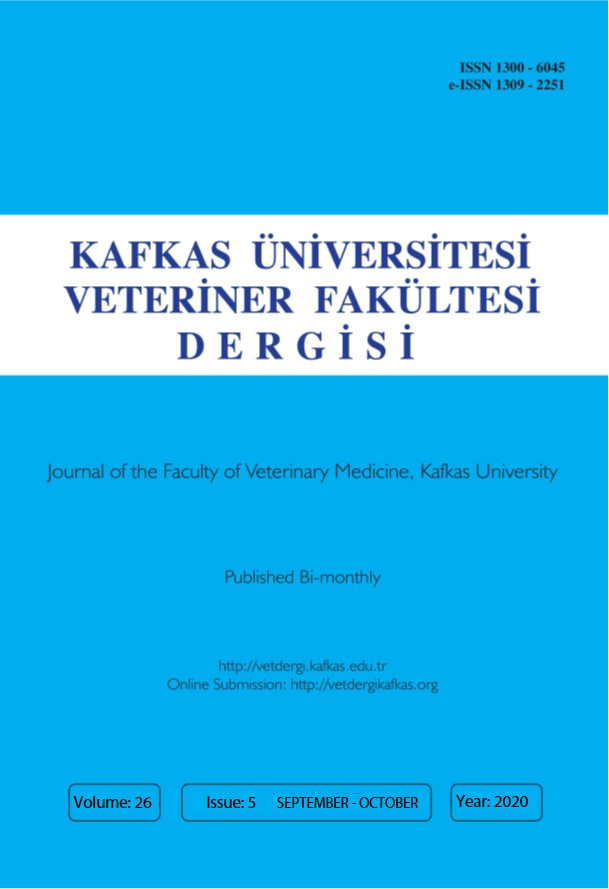
This journal is licensed under a Creative Commons Attribution-NonCommercial 4.0 International License
Kafkas Üniversitesi Veteriner Fakültesi Dergisi
2020 , Vol 26 , Issue 5
Differentiation of Staphylococcus pseudintermedius in the Staphylococcus intermedius Group (SIG) by Conventional and Molecular Methods
1Department of Veterinary Microbiology, Infectious and Parasitic Diseases, Faculty of Veterinary Medicine, Trakia University, Stara Zagora 6000, BULGARIA2Department of Veterinary Surgery, Faculty of Veterinary Medicine, Trakia University, Stara Zagora 6000, BULGARIA
3Department of Obstetrics, Reproduction and Reproductive Disorders, Faculty of Veterinary Medicine, Trakia University, Stara Zagora 6000, BULGARIA
4Department of Internal Diseases, Faculty of Veterinary Medicine, Trakia University, Stara Zagora 6000, BULGARIA
5Department of Molecular Biology, Faculty of Medicine, Trakia University, Stara Zagora 6000, BULGARIA DOI : 10.9775/kvfd.2020.23988 Staphylococcus pseudintermedius is a member of the Staphylococcus intermedius group (SIG) comprising representatives with similar phenotypic characteristics. The purpose of this study was to optimise a method for accurate differentiation of S. pseudintermedius in clinical samples from dogs and cats based on PCR-RFLP analysis, following the key biochemical tests for SIG group assignment, and to determine the prevalence of S. pseudintermedius compared to other members of the SIG group. To implement this, 158 isolates from dogs and 17 from cats, 4 reference strains - S. intermedius ATCC 29663, S. pseudintermedius LMG 22219, Staphylococcus delphini ATCC 49171, Staphylococcus aureus ATCC 25922 and 5 field strains of S. aureus were analysed. The generated PCR-RFLP profile (pta gene, MboI restriction enzyme) clearly differentiated S. pseudintermedius within the SIG group by having two distinctive bands of 213 and 107 bp, respectively. The data showed a predominance of S. pseudintermedius in clinical samples from dogs, while no S. pseudintermedius were found among the cat"s samples. In conclusion, due to the atypical biochemical reactions found in some S. pseudintermedius isolates (14.6%), precise identification should be based on an extensive phenotypic assay together with a molecular biological method or the latter alone. Keywords : Staphylococcus pseudintermedius, Biochemical markers, PCR-RFLP analysis, differentiation, Staphylococcus intermedius Group










